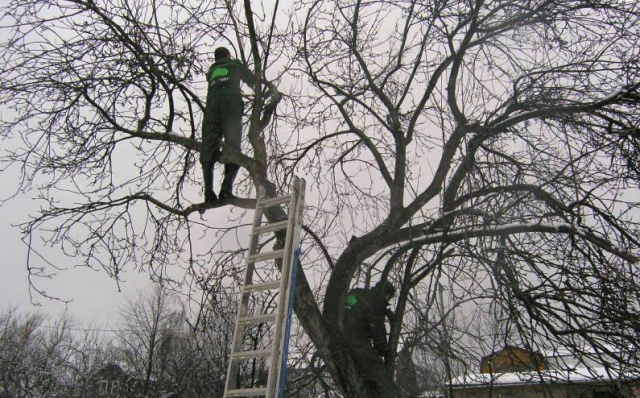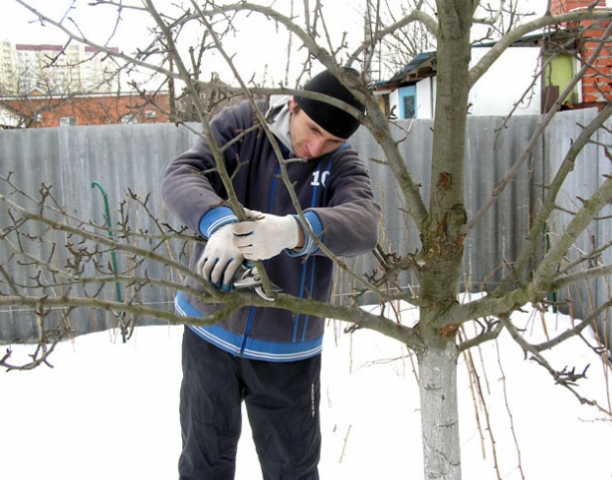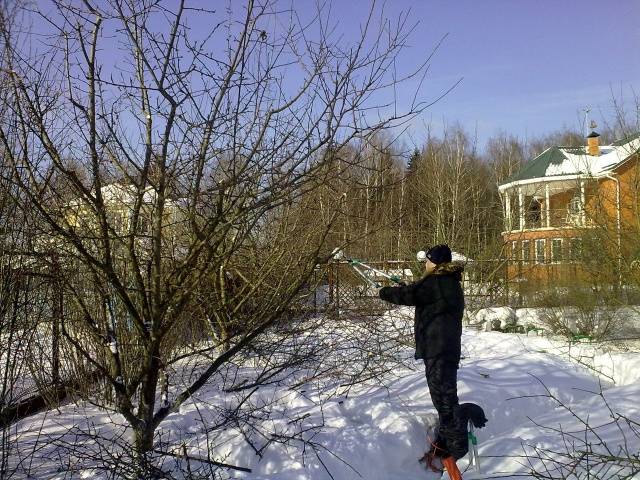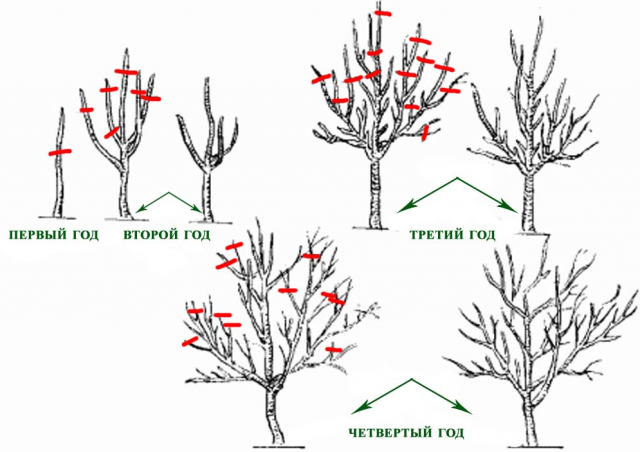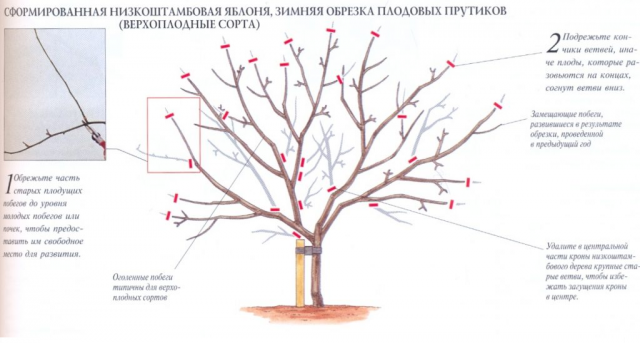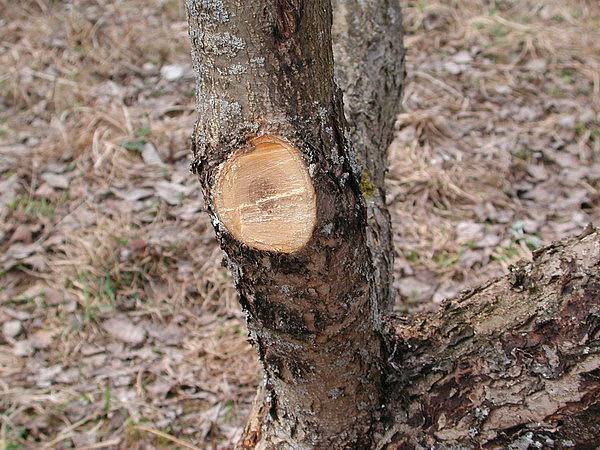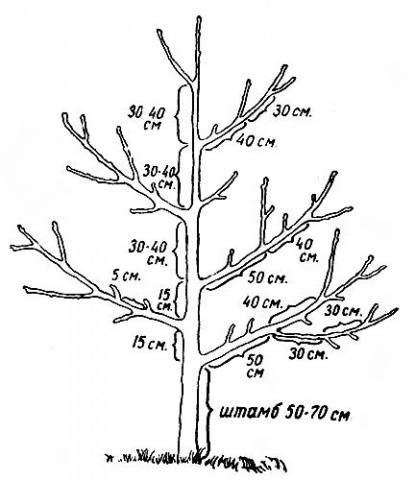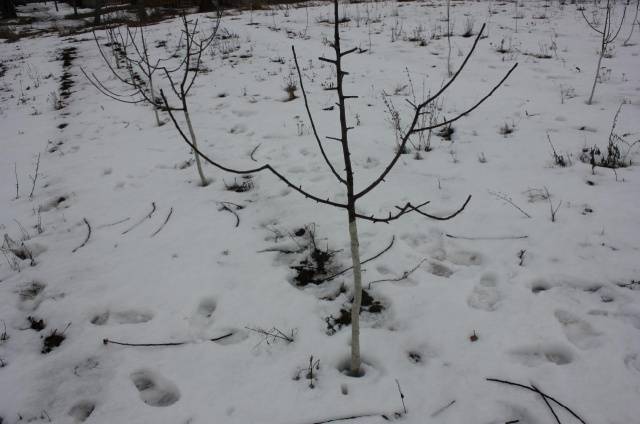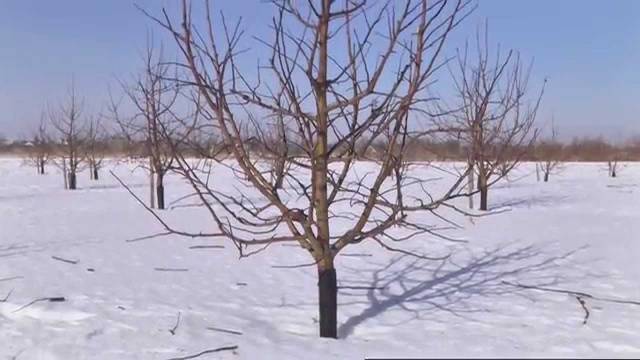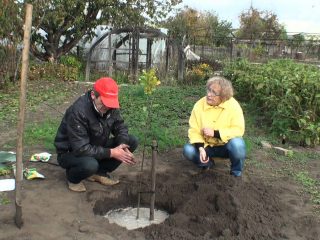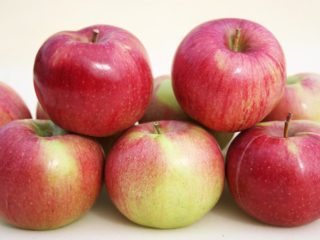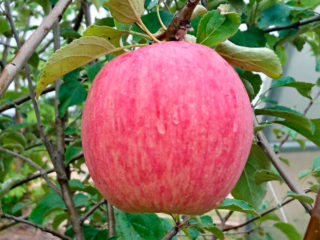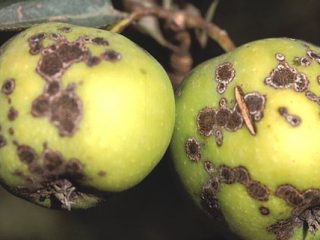Content
Anyone who grows apple trees knows that caring for fruit trees includes pruning the branches annually. This procedure allows you to properly form the crown, regulate plant growth and increase yields. Pruning can be done in early spring or late in the fall, but experienced gardeners, professionals in their field know that the best option is pruning apple trees in winter. Further, in the section we will talk about why exactly in winter one should prune fruit trees and how to do it correctly.
Why prune apple trees
Young seedlings and already quite adult apple trees in the garden must be cut off annually, because:
- Correct pruning allows you to rationally distribute nutrients throughout the shrub, increasing crop yields.
- The dense crown prevents the penetration of sunlight, which contributes to the development of diseases, decay of fruits, and the reproduction of parasites.
- Removing dry and damaged branches helps to heal the apple tree.
- The unformed crown is too spreading, its thin vertices are not able to withstand the load from the fruit.
In the first years after planting, young apple trees need to be most carefully pruned, since at this time there is an active growth of vegetative organs, and the tree grows an excessively dense crown, which will subsequently be quite difficult to form. If pruning in the early stages of cultivation is neglected, then the harvest can only be harvested for the first few years, in the future the fruiting of the tree will significantly decrease or stop altogether. Mature trees also need to be pruned annually in order to improve their health and increase yields.
Why is it better to prune an apple tree in winter
Pruning even the smallest branch is stressful for the tree, therefore it is recommended to carry it out during the so-called sleep period, when the movement of juice in the body of the apple tree is stopped. The plant life cycle slows down in late autumn. Fruit trees wake up in early spring, which is signaled by the appearance of buds. Many gardeners, focusing on the changing seasons, try to prune apple trees either in the fall or in the spring, without thinking that the optimal time for pruning is in winter.
Pruning apple trees in winter is preferable because:
- In winter, apple trees are in a state of stable dormancy, and the likelihood of harming them is reduced to a minimum.
- Branches without foliage are clearly visible and you can objectively assess the dimensions of the plant, determine the need to shorten or remove certain branches.
- In winter, there is a low activity of parasites and bacteria that can settle on a fresh cut of wood.
- From mid-winter to spring, enough time passes for the slices to heal safely.
- Low temperatures in winter act as anesthesia, reducing stress on the apple tree.
- In winter, the gardener has enough time to do the job with the best quality.
- Apple trees cut in mid-winter wake up in spring without stunted growth.
Thus, it is the winter pruning that allows the most qualitative formation of the crown of fruit trees, causing the least suffering to them.However, it is worth remembering that there are restrictions for this event: you can cut and shorten the branches only at a temperature of at least -150C. Temperatures below this limit make plants fragile, and even with the utmost care, there is a chance of breaking a healthy, useful branch or damaging the fragile bark. It should be noted that the winter pruning of apple trees of late varieties is always tolerated without problems, varieties of middle and early ripening of fruits are slightly more sensitive.
Pruning methods and rules
Apple pruning depends on the age, height and varietal characteristics of the plant. We will try to understand in detail each of these factors separately.
Pruning depending on the age of the apple tree
The diagram below demonstrates some general principles of the formation of the crown of apple trees, depending on age:
It is necessary to form young apple trees in compliance with the following rules:
- For the first 4-5 years, you need to form the crown of the apple tree in such a way as to leave 6-8 skeletal branches.
- Only the longest and strongest branches should be left in the lower tier.
- The higher the tier, the shorter the branches should be on it. This will allow the plant to “open” as much as possible.
- It is necessary to remove branches growing down and horizontally to the side. You should also avoid parallel arrangement of branches.
Thus, it is in the first years of cultivation that you need to try to correctly form the skeleton of the apple tree. In this case, further pruning of branches will not be too difficult. It will only consist in thinning and healing the tree.
Do not forget about old apple trees in the garden. First of all, for mature fruit trees, sanitary pruning is necessary. It involves removing diseased, broken or damaged branches. For carrying out sanitary pruning, the winter season is excellent, when there is completely no movement of sap in the body of the plant.
Caring for mature apple trees also involves pruning thin shoots and thick old branches. You can shorten shoots with pruning shears. A hacksaw is suitable for thick branches. You need to cut off the branches correctly, without leaving hemp, since the cambium on them drags on rather slowly, as a result of which the hemp dry out and become a breeding ground for pests and bacteria.
In order not to damage the plant, it is recommended to first make an incision on the branch from the bottom, and then cut the branch completely from above. In this case, the branch will break under its own gravity without tearing off the bark on the trunk.
Pruning apple trees depending on varietal characteristics
In addition to the age factor, the type of plant affects the method and intensity of pruning. Some apple trees independently regulate the formation of shoots, and in this case only diseased branches have to be removed. In most hybrid apple trees, at the genetic level, breeders have laid such a feature of self-regulation.
Cutting apple trees is necessary not only to increase the yield, decorate the garden or heal plants, but also to make it convenient to harvest. So, some apple trees without pruning, they can reach a height of 8 m.That is why the height of crown formation depends on the variety, type of rootstock: it is customary to leave a crown 3-5 m high on vigorous rootstocks.If the stock is medium-sized, the crown height should not exceed 4 m. Low-growing varieties and hybrids are grown up to 2-2.5 m in total.
Schemes for the formation of apple trees
It is necessary to form the crown of all fruit trees in such a way that the sun's rays illuminate each branch as much as possible.This can be done arbitrarily, focusing only on the above rules or adhering to a certain scheme. So, for gardeners, at least 4 different schemes for the formation of the crown of apple trees have been proposed:
Longline-sparse pruning
This method of forming apple trees involves the creation of tiers. Each lower tier should be as open as possible. It is necessary to adhere to the principles of such formation from the first years of cultivation:
- In the first year, you need to outline several main lower branches at a height of 50-60 cm from the trunk. All greens above 80-90 cm from the trunk must be removed.
- In the second year, 2 oppositely directed strong branches should be left in the lower tier. The second tier should be planned 15 cm higher than the lower one so that its branches do not obscure the lower shoots.
- In the third year of cultivation, attention should be paid to the already existing skeletal branches. They need to be cut at a distance of 50 cm from the trunk. This year, additional branches of the third tier need to be laid.
- In the fourth year, you need to form the upper, final tier, consisting of one branch.
- In all subsequent years, the existing crown shape must be maintained by removing thin shoots.
The tier-sparse pruning method is preferable for apple trees. It is most commonly found in nature and allows good quality fruit to be grown in large quantities.
Fusiform scheme
The meaning of this scheme is that each branch located above on the trunk of the apple tree must be shifted a few degrees in relation to the lower branch. In this case, it is allowed to leave 3-4 branches on the lower branches, only 1-2 branches are left on the branches located in the middle of the trunk, and on the upper branches all lateral growth is removed. I begin to lay the lower branches at a height of 50-70 cm from the root collar.
As a result of this formation, a very decorative tree shape is obtained. If you lift all the branches up, then the shape of the plant will resemble a spindle. This feature gave this method its name. The advantage of this method, in addition to its high decorative effect, is the convenience of picking apples.
Cup-shaped formation
This method of forming apple trees is similar to a tier-discharged scheme. The only difference is that in the first year of cultivation, 3-4 skeletal branches are left and bend them 70-80 degrees from the trunk. This forced deformation allows you to make the same frame for the bowl. The branches of the upper tiers can also be slightly folded back to create a decorative tree shape. The formation of a bowl-shaped apple tree is well demonstrated in the photo below.
Vertical palmette
This scheme only applies to undersized apple trees with fragile branches. For such trees, support is vital, which can be made in the form of horizontally stretched strings along the fence or wall of a house, a shed. The distance between the horizontal strings (supports) should be 40-45 cm. For a low-growing apple tree, it is enough to install 3-4 such strings and one vertical support at the tree trunk.
Using this formation scheme, it is convenient to prune branches in winter, but skeletal shoots cannot be tied up in severe frost. In that case, there is a high probability of breaking fragile shoots.
A few important tips
Forming an apple tree correctly is quite difficult. This requires skills, knowledge and skills. For beginner gardeners, it is important to adhere to some general rules that will make the plant healthy and increase yield:
- Strong lateral shoots in winter are recommended to be cut into 4-6 buds.
- Pruning weak shoots into 2-3 buds activates their growth.
- Branches growing downward or at a very acute angle to the trunk must be cut off.
- Diseased branches must be removed completely to prevent the spread of the disease.
- When pruning, do not leave hemp.
- For pruning apple trees, you need to use only a sharp and decontaminated tool.
- The temperature in winter at the time of pruning and for several days after the implementation of the event should not fall below -150FROM.
- Leave as few wounds as possible on the apple tree, and therefore sometimes it is better to remove one large branch than several side shoots on it.
- The wounds on the apple tree need to be treated with garden varnish or paint.
All the rules are clearly demonstrated in the video:
Surely the advice of a professional will help a novice gardener to carefully and competently prune an apple tree in winter.
You can separately get acquainted with the most common mistakes when pruning apple trees in the following video:
Thus, the winter season is at the same time the most gentle and at the same time dangerous time for pruning apple trees. Winter frosts stop the process of juices flow and put the plant into a state of sleep, "anesthesia". The danger lies in the fragility of bark and wood. The slightest awkward movement can damage the plant. That is why it is necessary to get to work with caution and patience. Do not rush, because each new cut is a wound for the tree. Try to be an accurate and responsible "surgeon" in this situation, and then for sure everything will turn out "perfectly".
